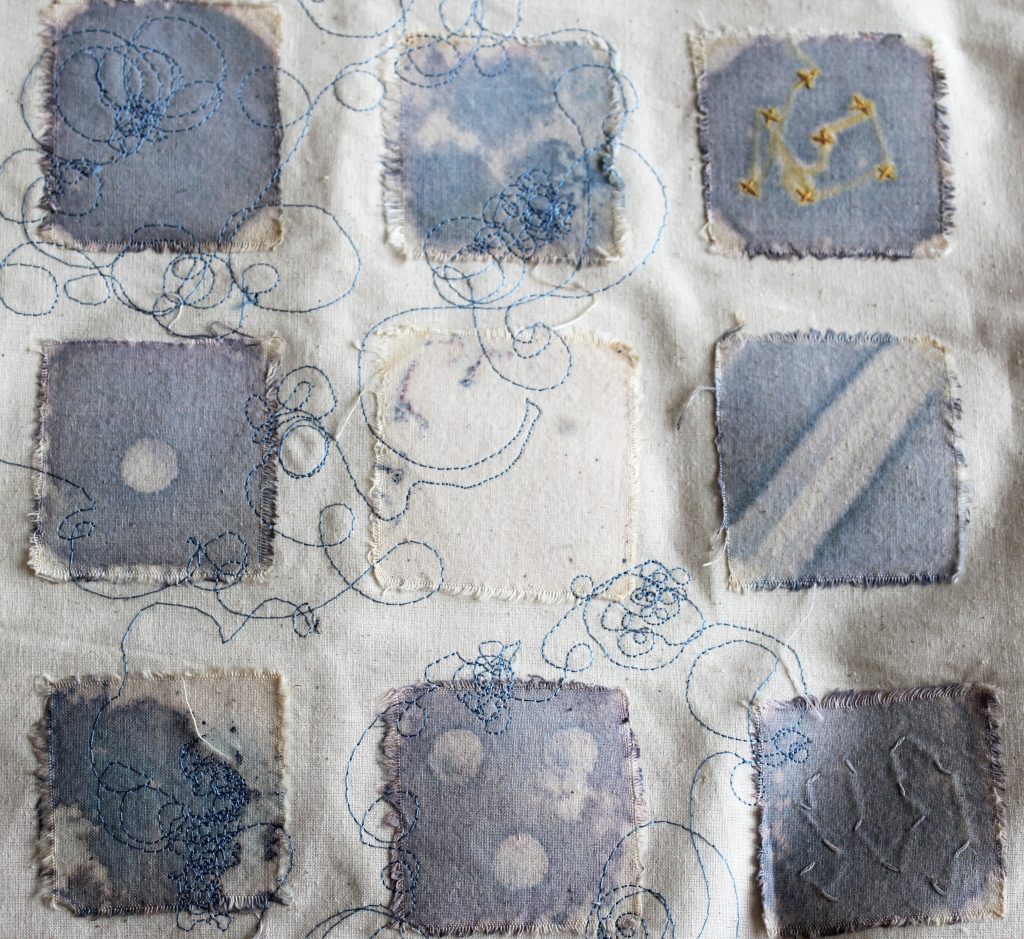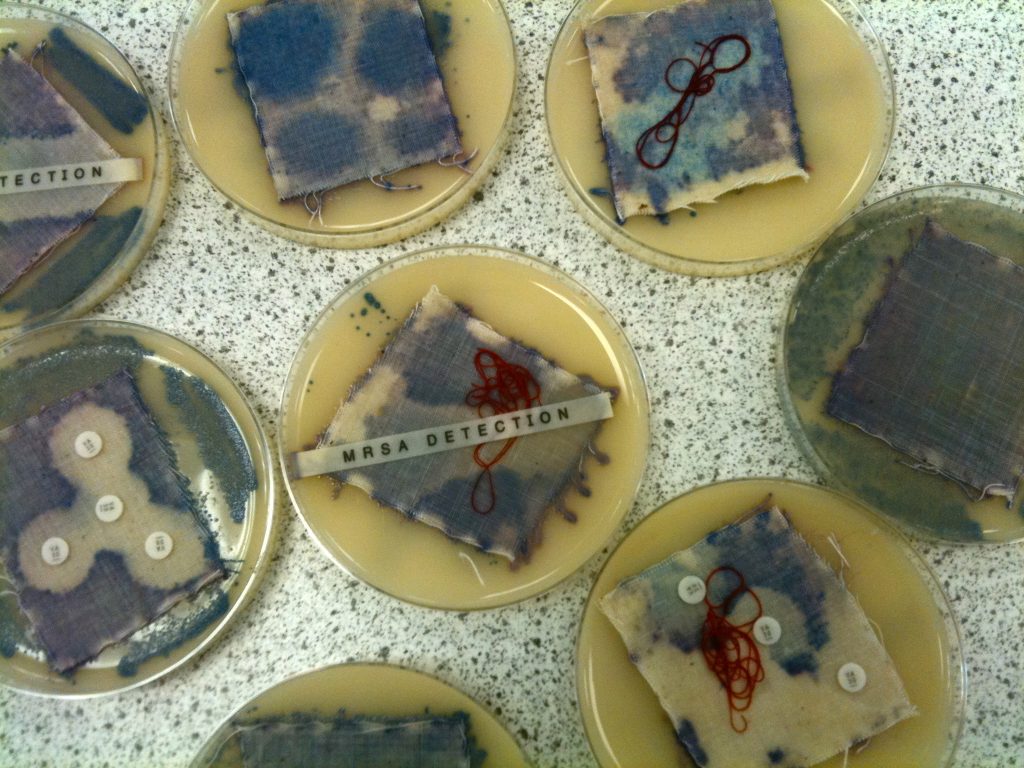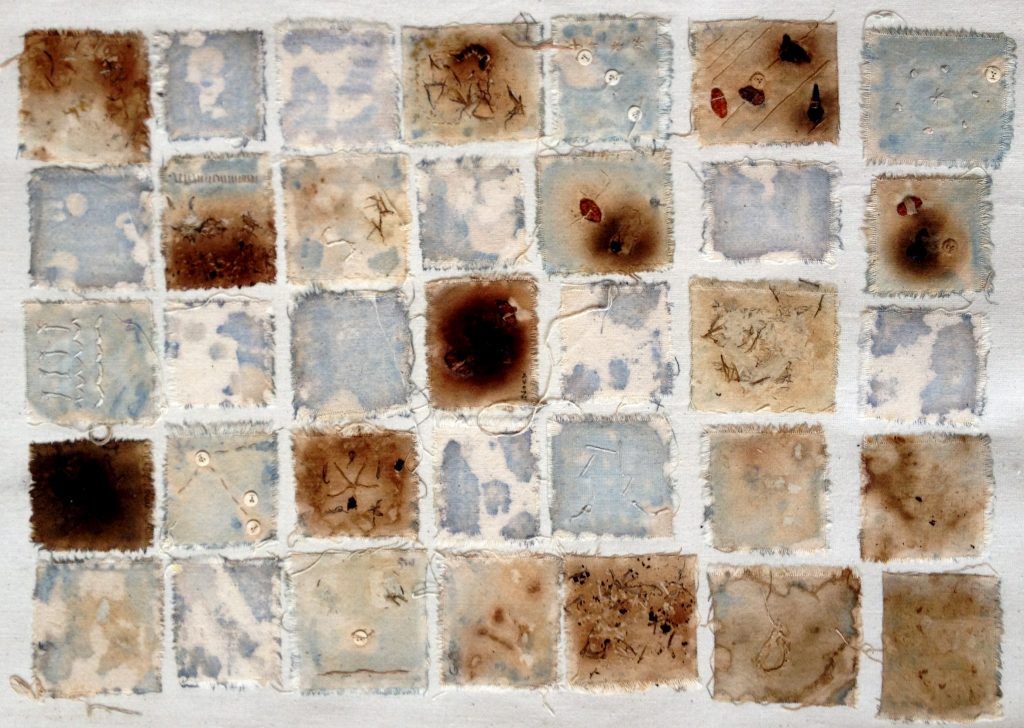“The MRSA Quilt” (2011) was created by embedding squares of cotton calico in chromogenic agar. This bacterial growth medium contains a dye that is taken up by Staphylococcus aureus bacteria, causing them to grow blue in colour and stain the calico. The patterns on the squares are created using different tools and techniques in the treatment and diagnosis of infections caused by this bacterium and its drug-resistant form, known as MRSA (methicillin or multi-drug resistant Staphylococcus aureus).

Patterns include stripes and polka dots created using antibiotic susceptibility tests, such as vancomycin susceptibility discs and cefoxitin strips, and embroideries made using natural antibiotic dyed threads. Quilts are a traditional way of passing down stories and the artwork can additionally be seen as a discussion tool to facilitate dialogue between the wider public and scientific research teams.

Funded by a Leverhulme Trust Artist in Residence Award in 2011 and made in collaboration with Dr James Price, Professor John Paul as part of Anna Dumitriu’s work with Modernising Medical Microbiology at The University of Oxford.
Becoming Resistant
A second work in the series, textile piece was created from the results of a ‘drop in’ quilt-making workshop. Participants created their own experiments on quilt squares using natural and clinical antibiotics on chromogenic agar, which causes bacteria to turn blue. Back in the lab, the squares were inoculated with bacteria and the resulting growth patterns were developed into this artwork. The bacteria used were two variants of Staphylococcus aureus: MSSA and MRSA. The first is susceptible to the antibiotic methicillin and the second resistant to it.

